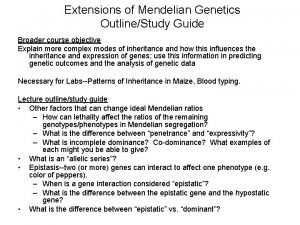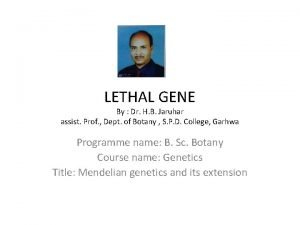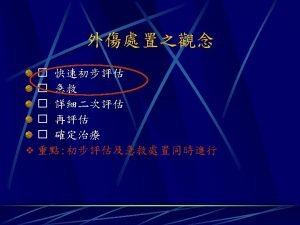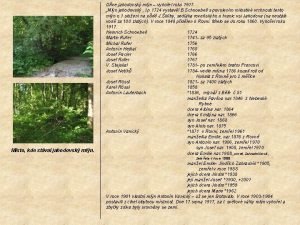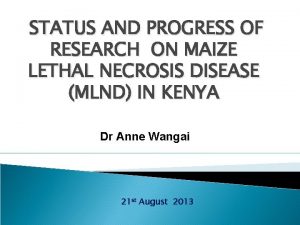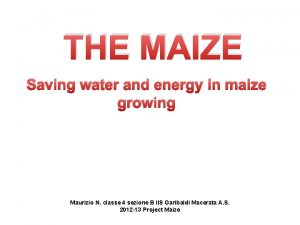Maize Lethal Necrosis MLN disease A threat to











- Slides: 11

Maize Lethal Necrosis (MLN) disease: A threat to food security in eastern Africa Francis Mwatuni & B. M. Prasanna MLN Diagnostics and Management Project, CIMMYT, Nairobi, Kenya Presentation to The Trade Africa Feed the Future Regional Conference Arusha – April 12 th 2016

MLN in eastern Africa is caused by coinfection of maize plants by MCMV and SCMV

Virus: Either individual or compound Susceptible Germplasm (seeds)? What exactly is causing the spread of MLN? Vectors: Presence of aphids and thrips, other insects Environment: Conditions favoring vectors and disease

Spread of Maize Lethal Necrosis (MLN) in eastern Africa Ethiopia June 2014 S. Sudan Jan 2013 Kenya Nov 2011 Uganda Oct. 2012 DRC March 2014 Rwanda Mar 2013 Tanzania Aug 2012 Source: Aisja Frenken (FAO REOA)

MLN Impact • 23% yield loss in Kenya • 0. 3 million metric tons • US $188 million Source: De Groote et al. (2015)

We need to tackle the MLN challenge on diverse fronts

First-generation MLN-tolerant hybrids released and being scaled-up for delivery to farmers in eastern Africa Country Variety Released by Seed company Uganda UH 5354 NARO NASECO UH 5358 NARO To be decided by NARO H 12 ML KSC H 13 ML KSC Meru-Agro Meru. Agro Kenya Tanzania HB 607 MLN-tolerant CIMMYT-derived hybrid vs. commercial checks under artificial inoculation in Naivasha

MLN Resistant Hybrids (Naivasha; 2016) Resistant Hybrids Commercial Check 15 second-generation CIMMYT-derived MLN resistant hybrids are presently under NPTs in Kenya, Tanzania and Uganda.

Need to control the spread and impact of MLN in sub-Saharan Africa Target countries 1. Ethiopia 2. Uganda 3. Kenya 4. Rwanda 5. Tanzania 6. Malawi 7. Zambia 8. Zimbabwe 1 2 3 4 5 MLN-endemic countries Non-endemic countries 6 7 8

MLN Phytosanitary Co. P established in Feb 2016 The purpose of the MLN Phytosanitary Co. P: • create and ensure a structure that allows the stakeholders to promote the best practices in controlling the spread and impact of MLN in SSA • build common capability in MLN-related phytosanitary procedures and practices across the organisations • Share knowledge and best practices on MLN diagnostics and management across borders

Thank you for your interest!


